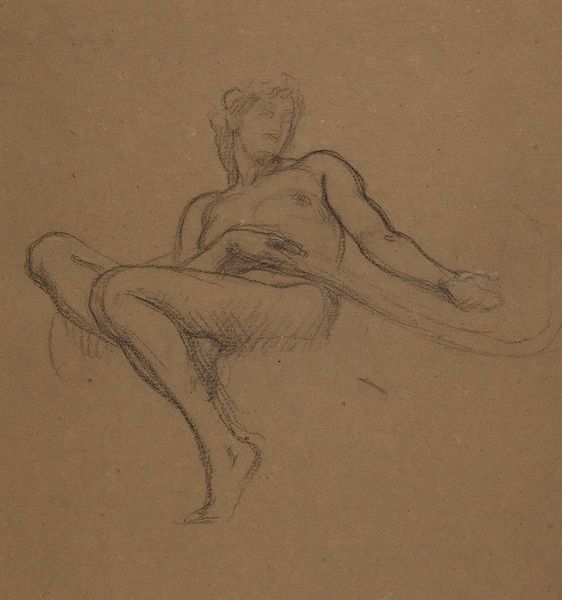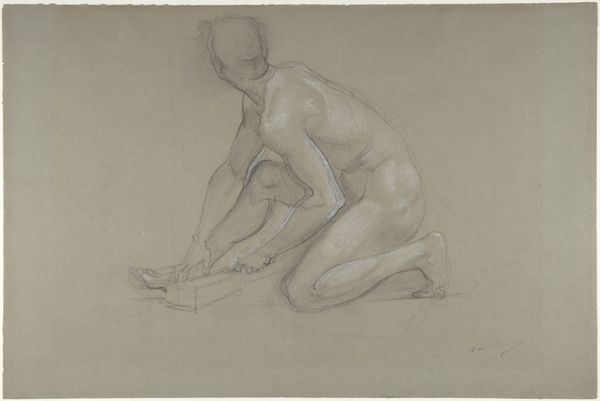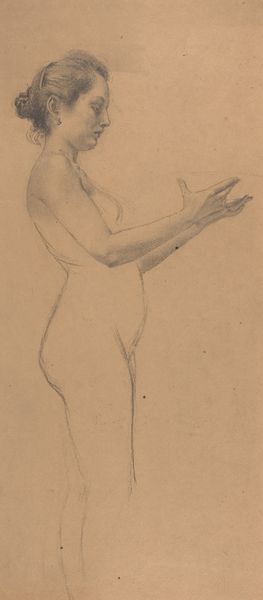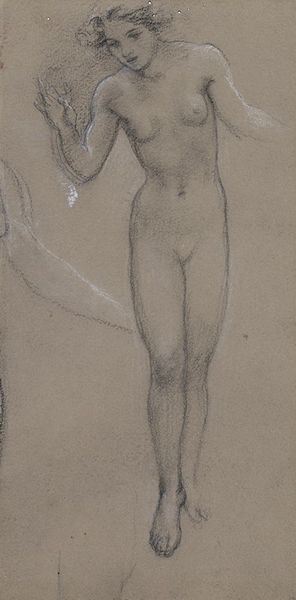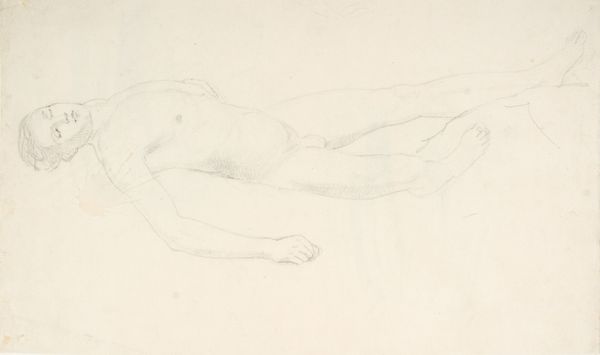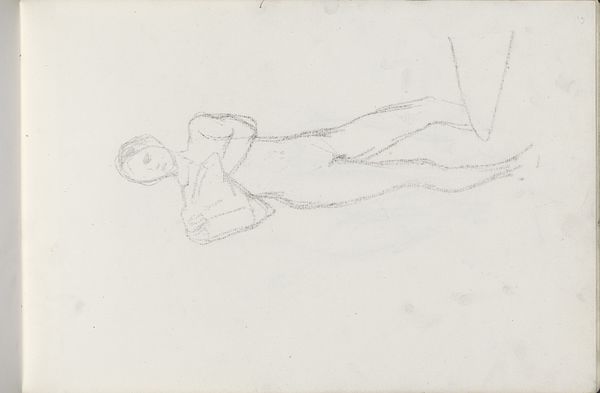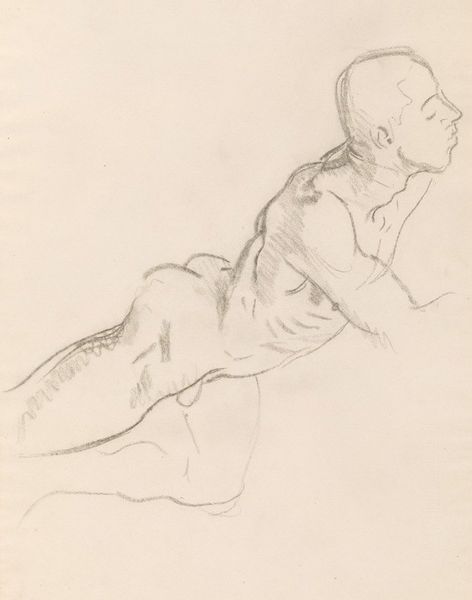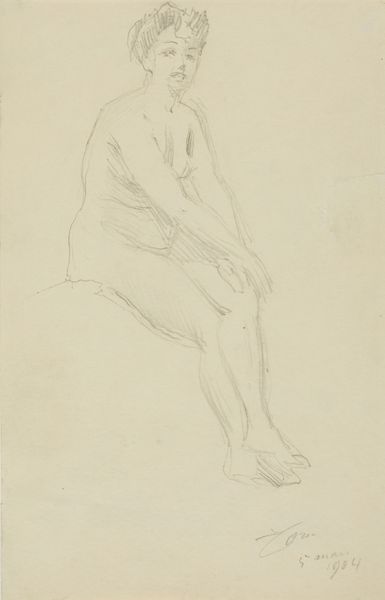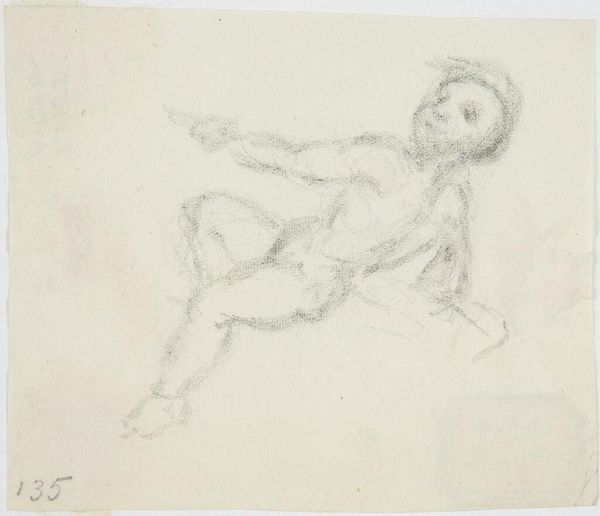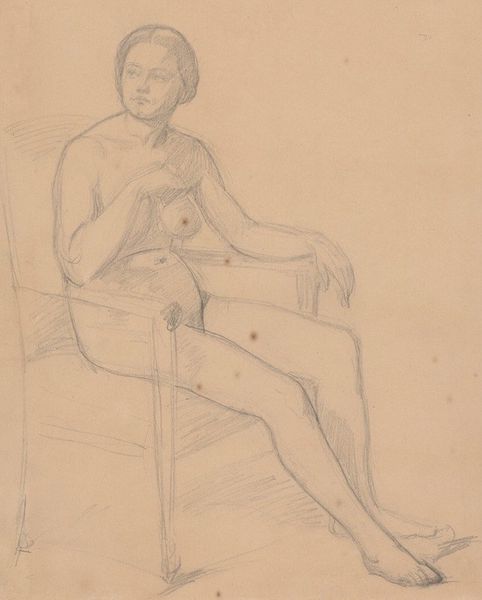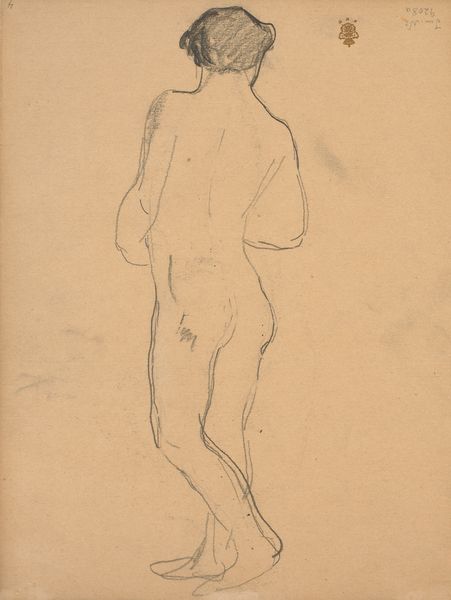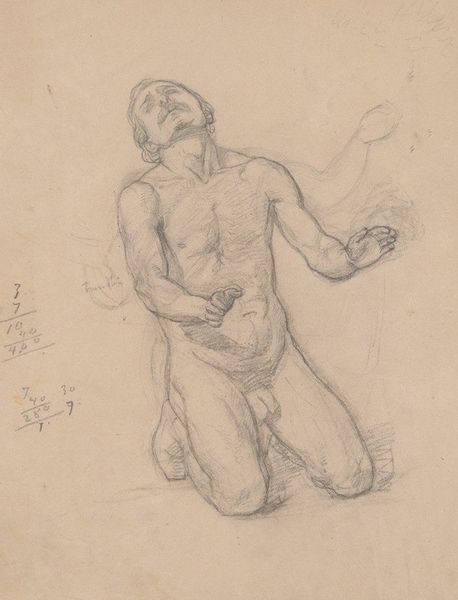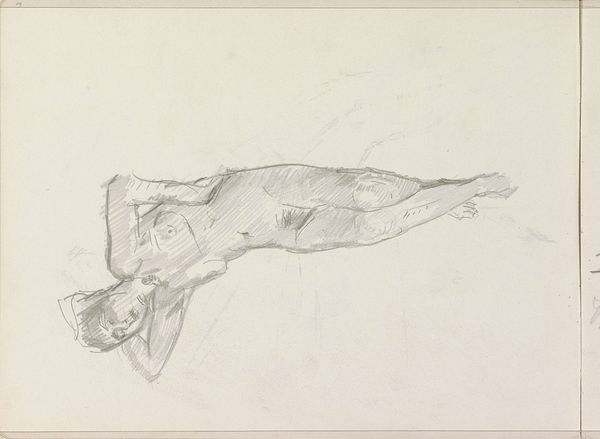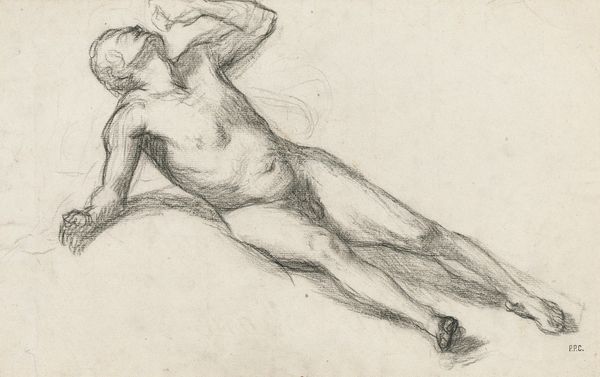
drawing
#
drawing
#
amateur sketch
#
light pencil work
#
pencil sketch
#
sketched
#
incomplete sketchy
#
study drawing
#
idea generation sketch
#
detailed observational sketch
#
rough sketch
#
initial sketch
Copyright: Public Domain: Artvee
Editor: So, here we have Józef Simmler’s “Sketches of Putti and Draperies for the 'Wedding Procession of Cupid and Psyche' Ceiling", made in 1863, and rendered in pencil. The image has an intimate feel. It's just one cherubic figure reclining in what looks like a preparatory drawing. What stands out to you? Curator: The most striking element to me is how Simmler, even in a sketch, utilizes the cherub, or putto, a visual symbol loaded with history. Do you recognize the historical associations carried by the putto? Editor: Of course, it's often seen in Renaissance art. I think of them primarily as religious figures. Curator: Exactly! And earlier, going back to classical antiquity, putti were associated with Cupid or Eros. Simmler is drawing upon a rich cultural memory, activating not just religious sentiment but also concepts of love, innocence, and perhaps even mischievousness. Consider its use within a 'Wedding Procession'--what does the symbol bring to mind? Editor: Given it’s a wedding procession, it makes me think of love, like a cherubic Cupid in a new setting. So Simmler's not just sketching a figure, but a symbol imbued with meaning, even in a rough form? Curator: Precisely. And consider the nature of a sketch: an idea, a potential. The image exists within the tension between the classical cherub figure, but set in a later era. What meaning does that convey? Editor: So even an initial sketch can carry so much symbolic weight! I never thought about the putto in such a broad, historical sense. Thanks, this has totally shifted my perspective. Curator: And that is the beauty of visual symbols; they are containers of cultural memory, waiting to be unlocked.
Comments
No comments
Be the first to comment and join the conversation on the ultimate creative platform.
